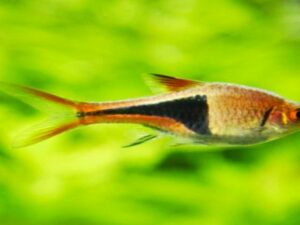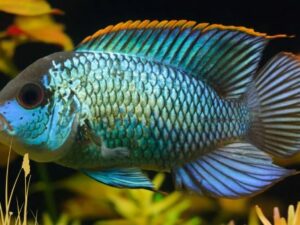The Asterina Starfish is not a standard pet by any means, but they are becoming increasingly popular due to their low-maintenance needs and interesting appearance.
Many people will define this aquatic creature as a “beginner” pet, but it can be delicate and require extra care if you want them to thrive in your home.
They are small, hardy creatures that come in various colors and patterns. They have a disc-shaped body with five arms radiating from the center.
These tiny stars suddenly appear on live rock or coral pieces and are often mistaken for pests. However, they are harmless and can be beneficial to your aquarium ecosystem!
Despite their delicate nature, Asterina Starfish is one of the hardest creatures you can have in your saltwater aquarium. They are very adaptable and can live in a wide range of conditions.
While Asterina Starfish are attractive in the eyes of many aquarium enthusiasts, they have a few predators. The biggest threat to these creatures is larger fish that may view them as food. Another potential predator is the Arrow Crab, known for preying on smaller invertebrates.
This care guide will cover everything you need to know about Asterina Starfish so you can decide if they are the right pet for you. So without further ado, let’s get started!
Species Summary
Table of Contents
| Scientific name: | Asterina gibbosa |
| Common names: | Asterina Starfish, Common Starfish, Pincushion Starfish |
| Family: | Asterinidae |
| Color: | Red, yellow, grey, or white |
| Origin: | South Atlantic Ocean |
| Minimum Size: | 0.2-0.8 inches |
| Life expectancy: | Up to 2 years |
| Habitat: | Found on reefs and in rock crevices |
| Minimum tank size: | 30-100 gallons |
| Temperature range: | Approx. 45°F |
| Water type: | Saltwater |
| Activity Level: | Low |
| Tankmates: | Peaceful fish, shrimp, and crabs |
| Gender Differences: | Not applicable |
| Care Level: | Easy |
| Temperament: | Peaceful |
| Compatibility: | All marine fish and invertebrates |
| Breeding: | Reproduce asexually |
| Diet: | Microorganisms, non-selective omnivorous |
| Feeding Frequency: | 1-2 times per week |
| Behavior: | Nocturnal feeders |
Asterina Starfish are marine invertebrates with disc-shaped bodies with five arms radiating from the center. They are found on reefs and in rock crevices and come in various colors, including red, yellow, grey, and white.
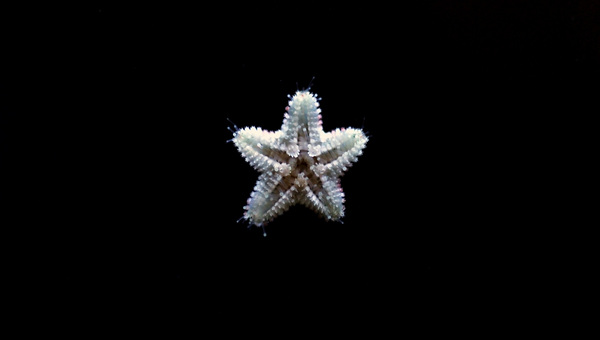
These creatures are nocturnal feeders that spend most of the day hiding. There are 15 known species of Asterina Starfish, but the most common species kept as pets are the Asterina gibbosa.
These starfish are also known as Common Starfish or Pincushion Starfish. They are found in the South Atlantic Ocean.
They are also known as “Bat Stars” because of their unique ability to swim short distances by using their arms as “wings.” This mode of transportation is used when they are looking for food or a new hiding place.
This aquatic creature prefers a coarse substrate, plenty of live rock, and hiding places. They do not need a lot of light and can tolerate a wide range of water parameters.
The Asterina Starfish is often referred to as a “hitchhiker,” It is commonly found attached to live rock or coral. These starfish are very hardy and can live in many conditions. They are also known for their ability to reproduce asexually.
They are not expensive. They cost about $2 a piece if you buy a group of them.
Asterina Starfish Size & Growth Rate
The Size of Asterina Starfish can range from 0.2-0.8 inches. They have a very slow growth rate and can live up to 2 years.
Asterina Starfish Lifespan
They have an average lifespan of around two years. But the maximum age is still unknown.
There are experienced aquarists who have kept Asterina Starfish in their tanks for up to 20 years without any problems.
Check Sand Sifting Starfish 101
Asterina Starfish Appearance
The basic body shape of an Asterina Starfish is a disc with five arms radiating from the center. They can vary in color, but the most common colors are red, yellow, grey, and white.
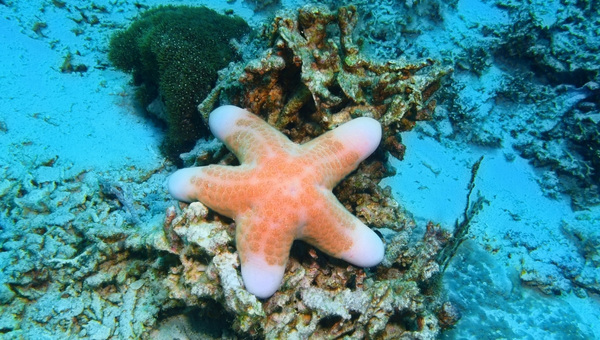
Their bodies are covered in tiny spines that help them move around and cling to surfaces. They also have numerous small tube feet on the undersides of their bodies that they use for locomotion and feeding.
The Asterina Starfish is often confused with the Brittlestar, a similar-looking creature. The main difference is that Brittlestars have much longer and thinner arms.
Short spines line the underside of each arm and are used for locomotion. These spines are also sharp and can cause minor cuts if you’re not careful when handling them. There are also 3-4 spines on each mouth-angle plate.
The mouth is located in the center of the underside of the body and has a small opening. They have no visible eyes and instead rely on light-sensitive cells in their body to detect changes in light intensity.
Asterina Starfish Behavior & Temperament
They are most active at night or when the lights are off. During the day, they will often hide among the rocks and coral. They are not territorial and can live peacefully with other fish, invertebrates, and coral.
The Asterina Starfish is a peaceful creature that will not bother other tank mates. However, they may compete with other animals for food. Providing plenty of food is essential so everyone can eat their fill.
Watching an Asterina Starfish eat algae on the aquarium’s glass can be interesting. They will use their tube feet to hold onto the glass while they scrape off algae with their mouth.
They latch onto the glass with suction-cupped legs and use their mouthparts to scrape algae off the surface.
Asterina Starfish Breeding
If you notice that any of your Asterina Starfish seem to be missing one or more limbs, don’t worry. This is normal behavior, and the Asterina Starfish will regenerate their limbs over time.
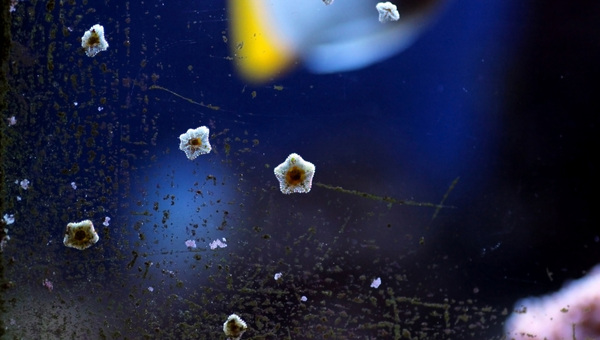
They don’t breed with each other but instead reproduce asexually by breaking off a piece of their body. This means that they drop or “shed” one or more legs – which will grow back over time.
The Asterina Starfish can drop a leg or two and still survive, but if it drops more than that, it may not be able to regenerate all of its limbs and will die.
Stored nutrients sustain the separated legs until a mouth and stomach disc form at the leg’s tip. The new starfish grows from this disc, and after a few weeks, it can start feeding on its own.
The new Asterina Starfish will be a clone of the original and have the same coloration, pattern, and Size.
Also, check Purple Firefish Care Guide
Can You Keep Asterina Starfish Together?
They tend to live in groups, and even in the wild, they are often found in large numbers. In captivity, they can be kept together without any problems.
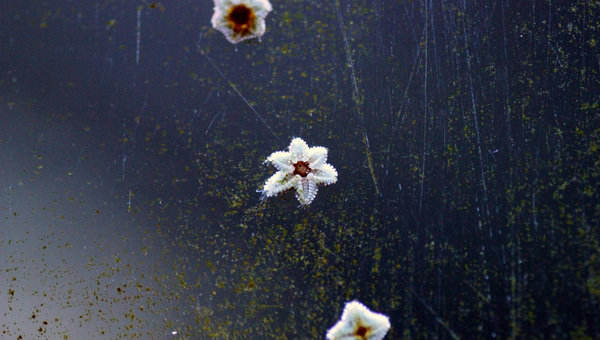
They may compete for food, so it is essential to provide plenty of food so everyone can eat their fill.
Asterina Starfish Care Guide
Asterina Starfish don’t need any special care and can live in a wide range of conditions. They are very hardy and can tolerate a wide variety of water parameters.
They do best in an established tank with plenty of live rock for grazing and hiding places. They are also known for their ability to reproduce asexually, so you may occasionally find baby starfish in your tank.
The only worry is that if their nutritional needs aren’t met, they may start eating your coral. They are known to be aggressive corallivores and can quickly decimate a coral colony if they are not well-fed.
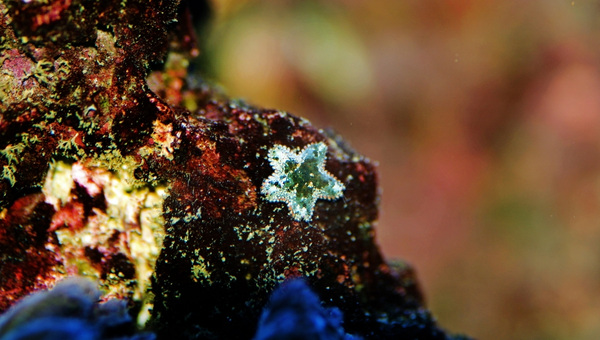
To prevent this, it is important to feed them a diet of meaty foods 2-3 times per week. This can include frozen Mysis shrimp, frozen brine shrimp, or pellet food designed for marine invertebrates.
You should also provide them plenty of live rock and a coarse substrate to graze on. This will help ensure they get the nutrients needed to stay healthy.
Here we will discuss everything you need to know about caring for your Asterina Starfish, including diet, tank setup, breeding, and more.
Also, check Cardinal Sulawesi Shrimp 101
Asterina Starfish Food & Diet
In captivity, if Asterina Starfish experience nutritional deficiencies, it can cause them to stop eating and eventually die. A proper diet is essential to keeping these creatures healthy and happy.
Make sure you have plenty of medium to large oolite aragonite in the tank’s substrate. They will also consume any leftover fish food, detritus, and algae. Frozen foods like Mysis shrimp, krill, and squid can be offered 1-2 times weekly.
To feed them, you will need the following:
- Aquarium-safe tongs: Aquarium-safe tongs are used to pick up the food and place it in the tank.
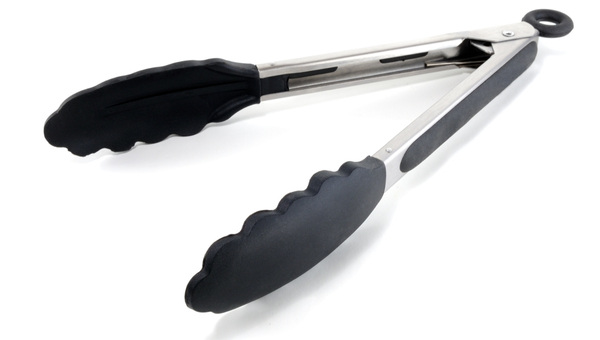
- Frozen food: This is used to feed the Asterina Starfish.
- Place the frozen food in the tank using aquarium-safe tongs.
- Allow the Asterina Starfish to eat their fill and remove any uneaten food from the tank.
- Repeat steps 1-2 as needed.
The majority will also eat cyanobacteria, coralline algae, tiny worms, detritus, and diatoms.
The Importance Of A Healthy Diet
A healthy diet is essential for the Asterina Starfish to stay healthy and happy. A healthy diet will help the Asterina Starfish to:
- Maintain a healthy appetite
- Stay active and playful
- Avoid health problems
- Live a long and happy life
You may also check Bamboo Shrimp Care Guide
Asterina Starfish Tank Mates
The Asterina Starfish is compatible with most fish, invertebrates, and coral. They are peaceful creatures that will not bother other tank mates. However, they may compete with other animals for food. Providing plenty of food is essential so everyone can eat their fill.
They cannot attack the fast-moving fish in your aquarium, so they are safe with even the most aggressive fish.
Some good tank mates for the Asterina Starfish include:
- Clownfish
- Damselfish
- Dottybacks
- Gobies
- Cardinalfish
- Royal Gramma Basslet
Bumblebee shrimp, like Harlequin shrimp, will eat them. So this is a good choice of shrimp to add to the tank if you want to get rid of the starfish. Harlequins eat only Asterina Shrimp, and you will have to ensure they don’t starve to death because there are no more Asterina Starfish in the tank.
Asterina Starfish Tank Size
Asterina Starfish are small creatures and don’t need much space to thrive. A 10-gallon tank is sufficient for a small group of these starfish.
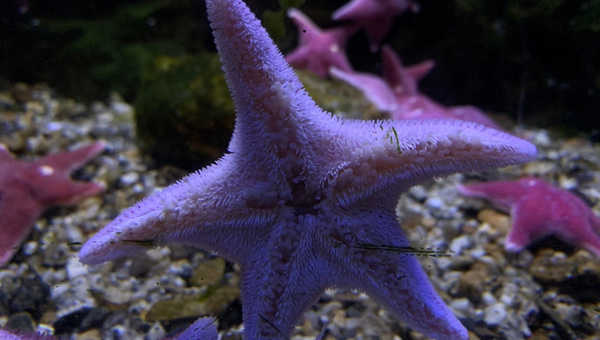
The larger the tank, the better, as this will give them more space to graze and hide. They are also known for their ability to reproduce asexually, so you may occasionally find baby starfish in your tank.
Water Parameters
The Asterina Starfish is tolerant of different water conditions and can live in various parameters. They do best in an established tank with plenty of live rock for grazing and hiding places.
They adapt well to almost all tank conditions, including temperatures as low as 45°F and as high as 86°F. The pH should be between 8.1 and 8.4, and the specific gravity should be between 1.023 and 1.025.
It is important to keep the water quality high in your tank, as these starfish are very sensitive to water pollution. Regular water changes and a sound filtration system are essential to keeping them healthy.
Water Changes
Asterina Starfish are very sensitive to water pollution and need high-quality water to thrive. It is important to perform regular water changes to keep the water quality high in your tank.
A 10% water change every week is recommended, but you may need more frequent water changes if your tank is heavily stocked or has a lot of live rock.
To change the water, you will need the following:
- A siphon: It is used to remove water from the tank.
- A clean bucket: A clean bucket is used to remove the water from the tank.
- Freshwater aquarium salt: We use freshwater aquarium salt to replace the minerals removed during a water change.
The steps to changing the water are:
- Use the siphon to remove 10% of the water from the tank.
- Pour the freshwater aquarium salt into the clean bucket.
- Add the same amount of water removed from the tank to the bucket. This will ensure that the concentration of salt is correct.
- Stir the saltwater until the salt is dissolved.
- Slowly pour the salt water into the tank, careful not to disturb the sand too much.
- Repeat steps 1-5 as needed until the desired amount of water changes.
You may also check Ghost Shrimp 101
Cleaning The Tank
Keeping the Asterina Starfish tank clean is important to prevent them from getting sick. You should remove any uneaten food, algae, or debris from the tank as soon as possible.
This will help remove any build-up of dirt and debris. You should also check the live rock for algae or other growths that need to be removed.
To clean the tank, you will need the following:
- A siphon: It is used to remove water from the tank.
- A clean bucket: A clean bucket is used to remove the water from the tank.
- A sponge or soft cloth: To wipe down the inside of the tank, we can use a sponge.
- Use the siphon to remove 10% of the water from the tank.
- Remove any uneaten food, algae, or debris from the tank.
- Wipe down the inside of the tank with a sponge or soft cloth.
- Repeat steps 1-3 as needed until the desired amount of water changes.
Cleaning The Filter
It is important to keep the filter clean to prevent it from becoming clogged and inefficient. You should clean the filter every 2-4 weeks or as needed.
To clean the filter, you will need the following:
- A siphon: We can use a siphon to remove the water from the tank.
- A clean bucket: It is used to hold the water that has been removed from the tank.
- Filter media: We can use filter media to clean the filter.
- Use the siphon to remove 10% of the water from the tank.
- Remove the filter media from the filter and rinse it in the clean bucket.
- Replace the filter media in the filter and add fresh water to the tank.
- Repeat steps 1-3 as needed until the desired amount of water changes.
You may also check: 10 Most Popular Types Of Angelfish
Testing The Water
It is important to test the water regularly to ensure that the levels of ammonia, nitrites, and nitrates are all within the safe range.
Ammonia and nitrites should be at 0 ppm, and nitrates should be below 20 ppm. If these toxins are too high, they can cause serious health problems for the Asterina Starfish.
To test the water, you will need the following:
- Aquarium test kit: This is used to test the levels of ammonia, nitrites, and nitrates in the water.
The steps to testing the water are as follows:
- Fill a clean bucket with aquarium water.
- Test the ammonia, nitrites, and nitrates levels in the water using an aquarium test kit.
- If the levels of ammonia, nitrites, or nitrates are above 0 ppm, perform a water change and retest the water.
- Repeat steps 1-3 as needed until the desired amount of water changes.
Also, check: Black Neon Tetra 101
Advantages Of Having Asterina Starfish In Your Tank
The Asterina Starfish are very helpful when it comes to keeping the tank clean. They will eat algae, detritus, and leftover food that other animals don’t want. This helps to keep the water quality high and prevents algae from taking over the tank.
They are also very interesting to watch as they move around the tank and graze on algae.
They are very low maintenance and don’t require any special care. They are a hardy species that is easy to care for.
You may also check: Rummy Nose Tetra 101
Disadvantages Of Having Asterina Starfish In Your Tank
The Asterina Starfish can sometimes be a nuisance as they may compete with other animals for food. Providing plenty of food is important so everyone can eat their fill.
They may also eat coral and other invertebrates, so it is important to research what kinds of animals they can and cannot live with before adding them to the tank.
Also, check: Silver Tip Tetra Guide
Wrapping Up
The Asterina Starfish is a hardy, low-maintenance creature that can significantly add to any saltwater aquarium. They help keep the tank clean and may also help to control algae growth.
They are easy to care for and interesting to watch as they move around the tank. Just be sure to research what kinds of animals they can and cannot live with before adding them to your tank. Thanks for reading!


